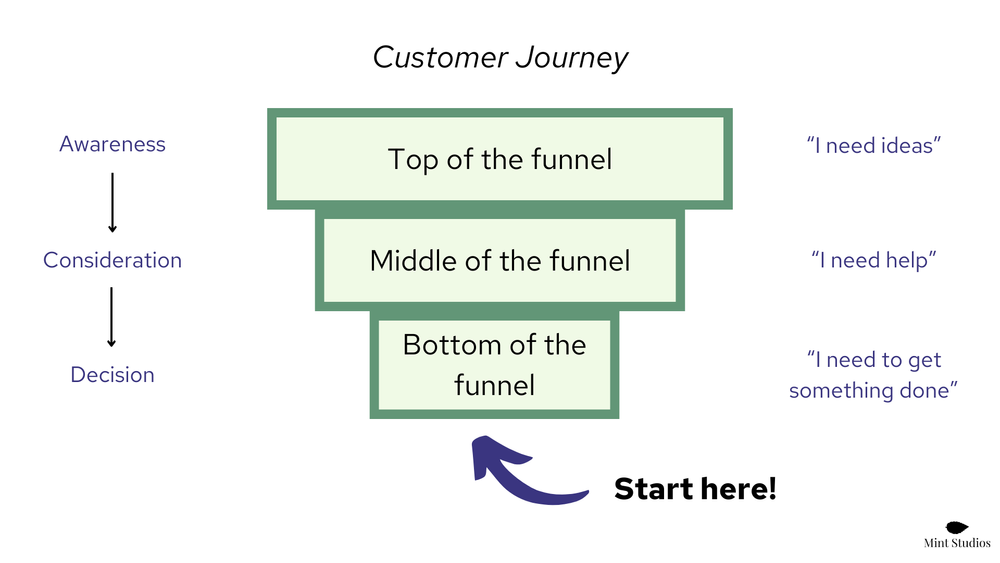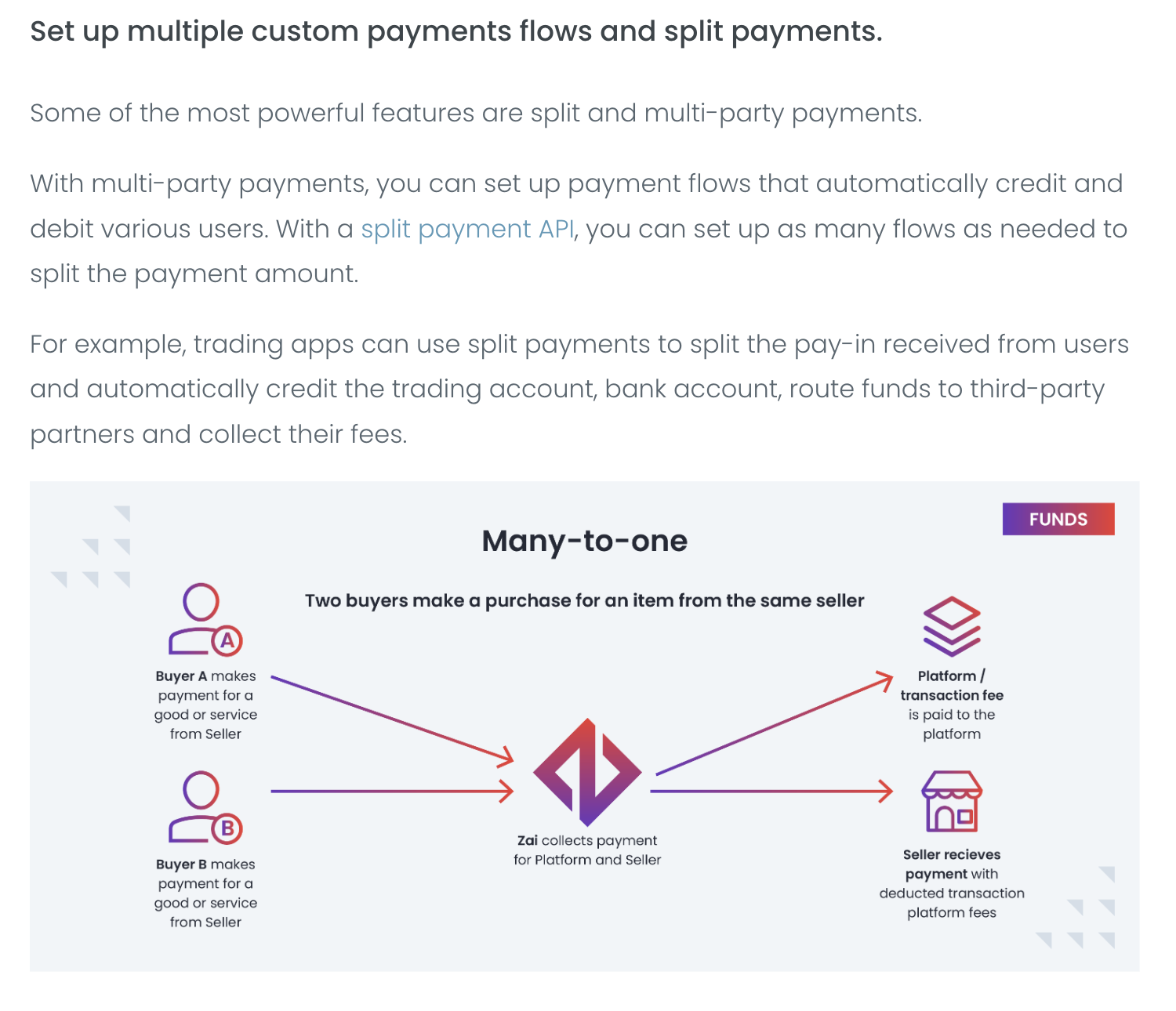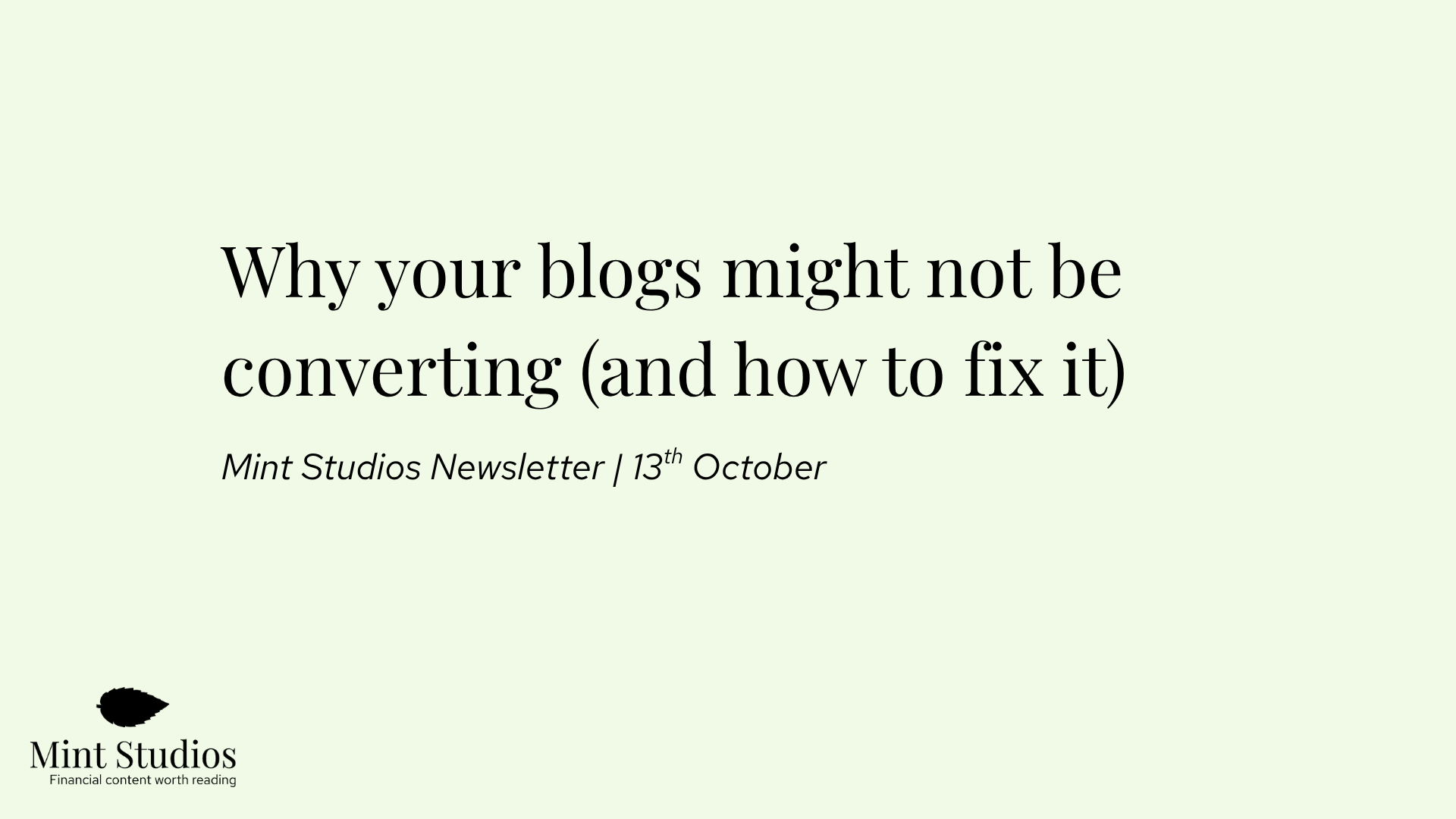In the past few years at Mint, we’ve helped over 20 fintech companies with their content.
We’ve helped one fintech grow customer acquisition by 700%. We’ve helped one bring in customers worth thousands of dollars. We’ve helped another get over 30 leads per month with content, and with another one, content was a more cost effective lead generation channel than paid website ads.
With all that experience and those results, we’ve seen what works and what doesn’t, and we’ve noticed a pattern of mistakes fintech marketers make when creating content.
Note: do you work for a fintech company and want to create content that brings in leads? Set up a discovery call with us and we’ll help you find out if content might help you with lead generation.
❌ Mistake 1: Not tracking leads and conversions
Many marketers and content marketers track the success of their blog content based on traffic numbers. As long as traffic is increasing month over month, then their content is succeeding.
Although traffic is an important metric, it won’t give you the full picture. Simply because: an increase in traffic does not always equal an increase in leads and conversions.
At the end of the day, the lifeline of a business is revenue. And if you’re a CMO or marketing manager, then you know that at the end of the day your leadership team wants to know the impact of your efforts on revenue.
As we’ve explained in other articles, we’ve been able to get deals for clients worth over $60k with traffic at just 200 to 300 sessions per month (specifically to our blogs). If we had only focused on traffic, then our content efforts would have been deemed a failure.
But because we were tracking the metrics that mattered – leads and conversions – via Hubspot, we could see how many leads we were bringing in as well as the value of that lead. We could demonstrate the contribution of our content and the value, which shows that our content is actually succeeding.

As a marketer, make sure you’re tracking the leads and conversions that your content is bringing in. If you can prove you’re bringing in leads, then it’ll be easier to make a case to the leadership team that the company should keep investing in content.
❌ Mistake 2: Starting with Top of the Funnel content
Top of the Funnel (TOFU) content is what you might call educational content, or thought leadership. It’s content that targets people who don’t even know they have a problem yet. It’s often for brand awareness and positioning.

TOFU content is important, but if you are currently getting pressured by the leadership team to bring in results, then does it really make sense to target people who could take over a year to convert?
We believe it makes more sense to start with Bottom of the Funnel (BOFU) content. That means writing content targeting people who know they have a problem, know what the solution is and are actively looking for it online.
That way, you can get more conversions and leads and get the low hanging fruit: people who are ready to convert. If you’re not targeting these people, then you are essentially leaving customers, and therefore revenue, on the table.
We always think it makes sense to do BOFU content first: this will get you results early on, and that will make it easier to get buy-in from the leadership team.
Ideally, you want to take advantage of SEO and target BOFU keyphrases that indicate that your target market is actively looking for a solution like yours. Those might be keywords like “top payment provider” and “fintech payment solution”.
By starting with BOFU, we were able to bring in leads for a client within month two of working with them. Read the case study here: How We Generated Leads for This B2B Fintech Client in Month 2 (In a Competitive Landscape!).
❌ Mistake 3: Creating content based on desk research
We’re not saying desk research is bad. We’re saying that if you have Subject Matter Experts on your team (and many fintech companies do), then why not base your content on their expertise rather than online research?
Many freelance writers and agencies will create thought leadership or blog content based on desk research of Google, eBooks and white papers. But your reader doesn’t want to read the same thing written in a different way: they want to read something new and useful.
Instead of creating content based on desk research, we believe it’s better to base your content on interviews with experts. There are a few benefits to doing it this way:
- If one of your missions is financial education, then creating expert-based content will ensure what you’re sharing is genuinely useful and adds to the discussion.
- If your goal is to position yourself as an expert in the market, then expert-based content will help you stand out since it’s literally coming from experts.
- By creating content based on expertise, you can add in details about your product, market and customer that you might not be able to do otherwise. This helps build trust in the eyes of your target market, and is more likely to turn them into a customer.
For example, in this article on PayTo (a new type of payment method in Australia), we’re able to go in-depth about certain use cases and examples. We’d never be able to do that solely with desk research:


❌ Mistake 4: Not writing for the level of your reader
You may have seen this type of content before:

If you’re a CFO or product manager and you read this, do you think you’d be impressed or want to work with that company?
We’ve seen a lot of fintech companies think that SEO content means writing content that’s for beginners. But what’s the point in writing for someone who isn’t in your target market (unless they eventually will be)? Why write about the details of what a payment method is, when your target market is looking for information on APIs?
Based on our experience, we find it makes a lot more sense to write for the level of your buyer. They are the ones who will become your customers. By educating them and giving them the right information, they are also more likely to be interested and reach out. By writing for beginners, you risk alienating your real target market and targeting the wrong people.
And by creating content based on an interview with an expert, this is a lot easier. Product managers, CTOs and technical people want to see:
- Diagrams
- Screenshots
- Examples and use cases
- Details
By writing this advanced type of content, we’ve had salespeople at our clients’ organisations say that “they are lucky to have this type of content”. If you’re embarrassed by your content, then it’s not a good sign. Instead, you should aim to be proud of the expertise you’re able to share with readers.
❌ Mistake 5: Not focusing on revenue and customers
Finally, this is the most common mistake we see in the content marketing industry.
As we mentioned at the beginning, many people in content marketing will focus on traffic, and other metrics like backlinks, domain authority and number of keywords.
And sure, sometimes these metrics are relevant. But you should never lose sight of the main objective with marketing, which is ultimately revenue.
The focusing on the wrong metrics leads to many content marketers and agencies basing their content strategy on “keyword research”. This often involves putting a competitor’s website through an SEO tool, picking a few keywords and then voila: those are your content ideas.
Again, this might work if you’re just trying to bring in traffic. But the ultimate goal of a company is to bring in revenue via customers – so why focus on traffic when you can bring in customers?
Instead of targeting the same keywords that your competitor is targeting, target the prospects who are searching for your solution. Instead of basing your content strategy on what everyone else is doing, base it on what your customers are searching for online. What indicates that they have a pain point? That they’re looking for a solution? That they’re not happy with their current solution?
Every content strategy we do is based on lengthy discussions with a salesperson, a growth person, founders and product people. We ask them specific questions to understand what a customer is looking for, and create a strategy based on that.
With this approach, we’ve been able to create content that competitors haven’t even thought of, and most importantly, we’ve been able to create content that helps our clients grow their company by acquiring more customers.
We hope with this article in mind, you’ll be able to avoid the same mistakes we’ve seen other marketers do in fintech.
Want to learn more and read more about content with fintech? Check out these resources:
- How Many Leads Can You Generate with Content Marketing?
- What is BOFU (Bottom of the Funnel) Content and Why Is it Important?
- How to Do Research for Bottom of the Funnel Content Marketing
Curious to see if our content methodology would work for your company? Book a call with us and we’ll help you determine if content would help your fintech company.











